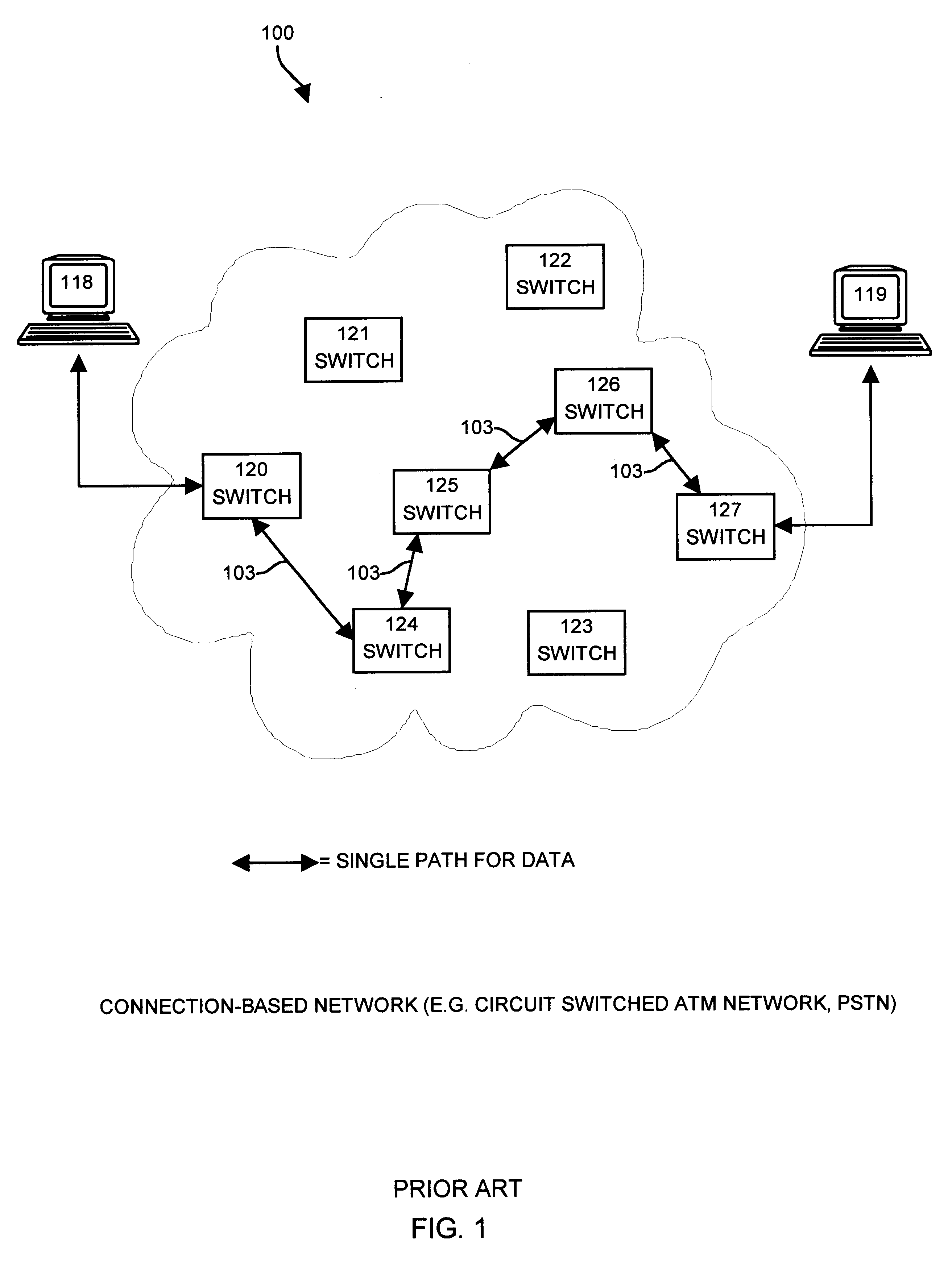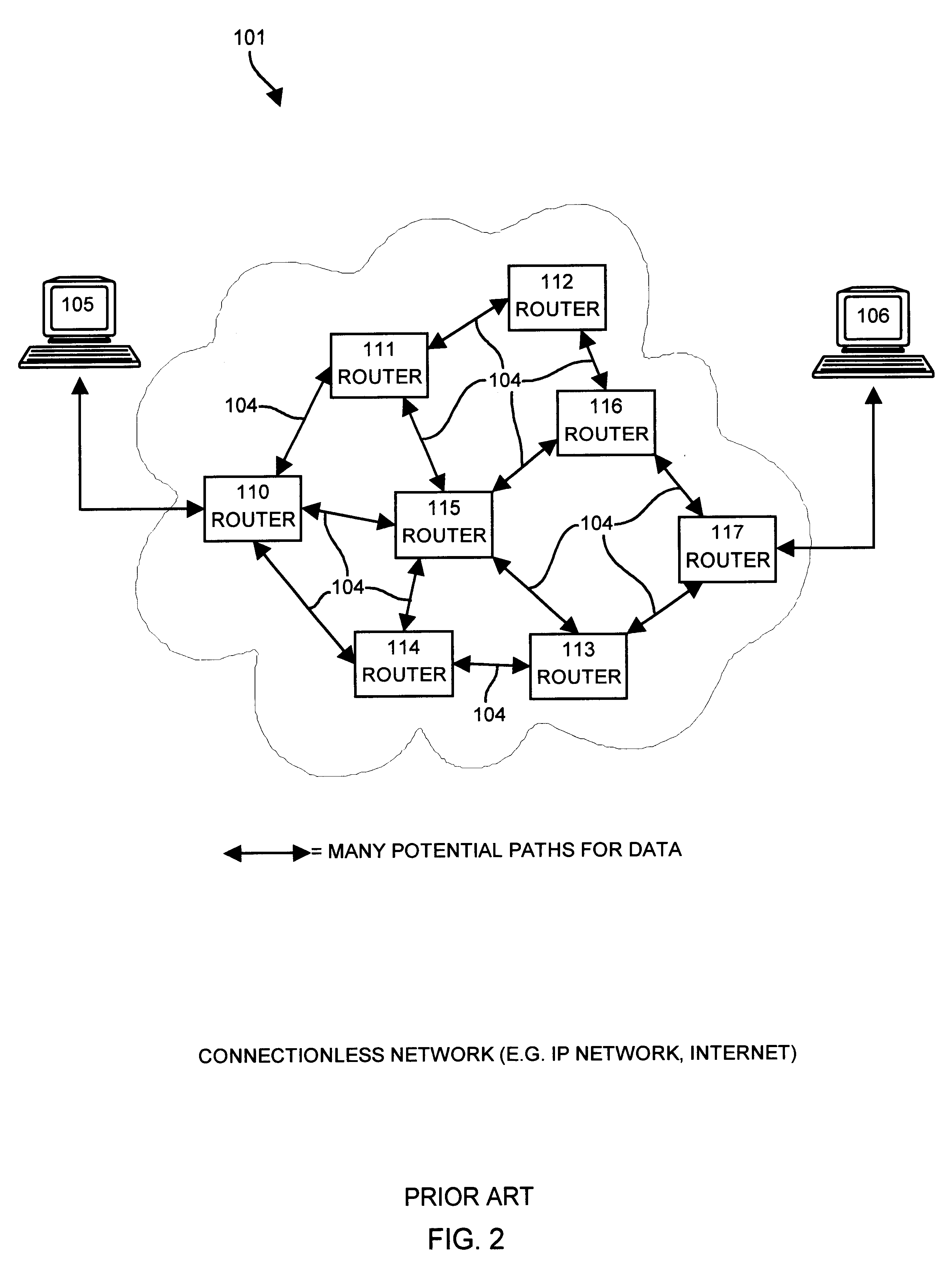Apparatus and methods providing redundant routing in a switched network device
a network device and switch technology, applied in the field of apparatus and methods providing redundant routing in a switched network device, can solve the problems of limited or no ability to re-route data traffic, difficult data path change for an active data communication session in a connection-based network, and inability to reconfigure routing tables and redirect data, etc., to achieve the effect of improving fault toleran
- Summary
- Abstract
- Description
- Claims
- Application Information
AI Technical Summary
Benefits of technology
Problems solved by technology
Method used
Image
Examples
Embodiment Construction
The following documents and web pages are hereby incorporated by reference in their entirety, as well as documents related to MPLS and label switching that may be referenced on such pages. The contents of the pages are included in the file history of this patent for future reference.
1. "A Framework for Multi-Protocol Label Switching", authored Jun. 24, 1999, which is an Internet Draft of Request For Comment 2026 (RFC2026) maintained on the Internet at URL http: / / www.ietf.org / internet-drafts / draft-ietf-mpls-framework-03.txt ) by the Internet Engineering Task Force (IETF).
2. World Wide Web Page entitled "Multiprotocol Label Switching (mpls)", last modified Jul. 06, 1999, maintained on the Internet at URL http: / / www.ietf.org / html.charters / mpls-charter.html by the Internet Engineering Task Force (IETF).
3. World Wide Web Page entitled "Tag Switching Architecture", maintained on the Internet at URL http: / / www.cisco.com / warp / public / 732 / tag / tagsw_ov.htm by Cisco Systems, Inc.
4. World Wide W...
PUM
 Login to View More
Login to View More Abstract
Description
Claims
Application Information
 Login to View More
Login to View More - R&D
- Intellectual Property
- Life Sciences
- Materials
- Tech Scout
- Unparalleled Data Quality
- Higher Quality Content
- 60% Fewer Hallucinations
Browse by: Latest US Patents, China's latest patents, Technical Efficacy Thesaurus, Application Domain, Technology Topic, Popular Technical Reports.
© 2025 PatSnap. All rights reserved.Legal|Privacy policy|Modern Slavery Act Transparency Statement|Sitemap|About US| Contact US: help@patsnap.com



